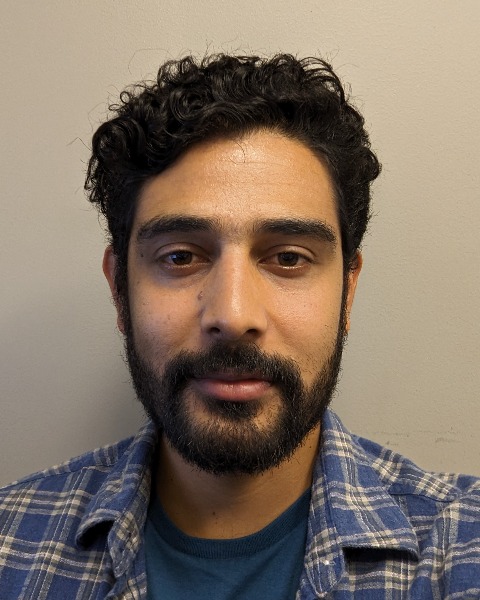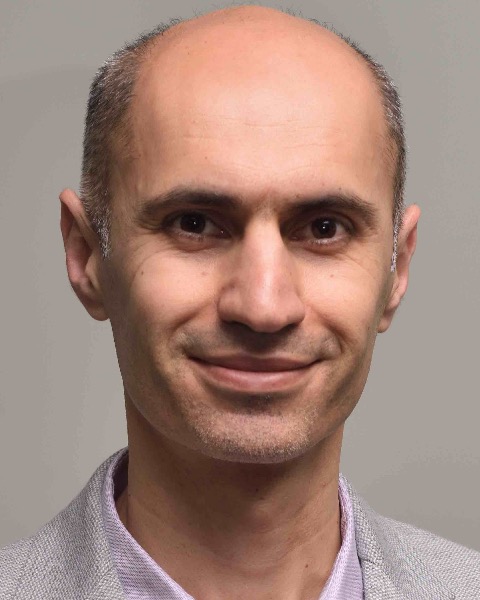Cancer Technologies
Cancer Technologies - Poster Session B
Poster S8 - Developing a 3D Model of Bone Metastasis of Breast Cancer
Thursday, October 24, 2024
2:45 PM - 3:45 PM EST
Location: Exhibit Hall E, F & G

Prasiddha Guragain, PhD (he/him/his)
Graduate Research Assistant
University of Akron
Akron, Ohio, United States
Hossein Tavana, PhD (he/him/his)
Department Chair/ Professor
University of Akron, Ohio, United States
Presenting Author(s)
Primary Investigator(s)
Introduction: Estrogen receptor-positive breast cancer (ER+ BC) comprises about 75% of all breast cancers and responds well to targeted endocrine therapies. [1] Nevertheless, recurrence of ER+ BC in metastatic sites poses an ongoing threat to patients. Even after 5 years of adjuvant endocrine therapy, up to 52% of patients remain at risk of distant recurrence and death 20 years after diagnosis.[2] Survival of cancer cells in bone marrow to form metastases accounts for about 70% of advanced ER+ BC disease [3] Although mesenchymal stromal cells (MSCs) in bone marrow are suggested to play a key role in this process, mechanisms of survival and resistance of ER+ BC cells to endocrine therapies are unknown. The goal of this study is to develop a 3D tissue engineered model to investigate effects of interactions of ER+ BC cells and MSCs on drug responses of cancer cells. Our findings indicate that MSCs promote resistance of ER+ BC cells to hormonal therapy by altering ER expression and inducing a cancer stem cell phenotype.
Materials and
Methods: MCF7, T47D, and HCC1428 cells were used as ER+ BC cells. HS5 cell line was used as MSCs. [4] Intermixed cancer and stromal cells at 1:9 ratio of cancer to stromal cells were dispersed in 25 µl of human type 1 collagen to form 3D cultures (Figure 1). Fulvestrant, an anti-estrogenic drug, was used at a concentration range of 10-2 - 102 M to treat cultures. On day 4, bioluminescence measurements of cells were done using a plate reader to determine cell viability. For molecular analysis, cancer cells were separated from stromal cells using human EpCAM microbeads (Miltenyi Biotech). qPCR, Western blot, and flow cytometry were used to measure the expression levels of different cancer stem cell (CSC) markers. All results were statistically analyzed using ANOVA with p< 0.05 considered significant to determine effects of bone marrow MSCs on ER+ BC cells.
Results, Conclusions, and Discussions: Results and
Discussion: We treated all three co-cultures with fulvestrant dose-dependently and determined the cancer cell viability. A representative result is shown in Figure 2 that demonstrates resistance of T47D cells to fulvestrant in presence of bone marrow MSCs. The area under the curve (AUC) increased from 312 square units for the monoculture of T47D to 602 square units for the co-culture. Consistent with results from the other two co-cultures, this suggests that MSCs promote endocrine therapy resistance in ER+ BC. Our analysis showed a significant decrease in estrogen receptor gene (ESR) expression, significant increases in the CSC markers CD44 and ALDH gene expression, but only a small increase in CD24 gene expression in ER+ cells in co-culture with HS5 cells (Figure 3). This finding was also consistent with protein levels of these markers quantified using Western blot and flow cytometry (data not shown). Because ER+ BC cells typically proliferate through signaling of estrogen, a decrease in ESR expression suggests activation of alternative proliferation pathways in cancer cells independent of estrogen. Moreover, high CD44 and ALDH and low CD24 expression has been associated with a hybrid CSC phenotype, which exhibits properties such as high plasticity, drug resistance, and invasiveness. [5] Our results suggest that the presence of MSCs shifts ER+ BC cells towards a hybrid CSC phenotype and leads to resistance towards endocrine therapy. This finding explains, at least in part, why anti-estrogenic drugs eventually fail in treating ER+ BC patients.
Conclusion: We engineered a tumor model to study survival and drug resistance of ER+ BC cells in a bone marrow environment. Interactions between MSCs and BC cells caused cancer cells to resist anti-estrogenic drug treatments. We suggest that this resistance is in part caused by the activation of a hybrid CSC phenotype. Further investigation to understand the downstream signaling pathways involved in drug resistance will guide developing novel targeted therapies for ER+ BC.
Acknowledgements (Optional): Financial support was provided by grant W81XWH-22-1-0119 from Department of Defense
